14 Fashion Facts That Will Blow Your Mind

From the quirky origins of your favorite wardrobe staples to the bizarre histories of the world’s most famous fashion designers, we’ve gathered some of the most interesting fashion facts guaranteed to blow your mind.
Where do our favorite wardrobe staples come from?

High heels were originally worn by men. Invented in Persia in the 10th century, heels were designed to give wealthy men more height and status. Heels also “clicked” into stirrups, making horseback riding easier and smoother.
Heels soon spread to Europe as status symbol. Eventually, women adopted the trend but with taller, thinner heels to give a more feminine appearance. By the 1800s, women of all social classes were wearing heels in daily life, even those who worked as farmers and housemaids. (Imagine working the fields in heels!)
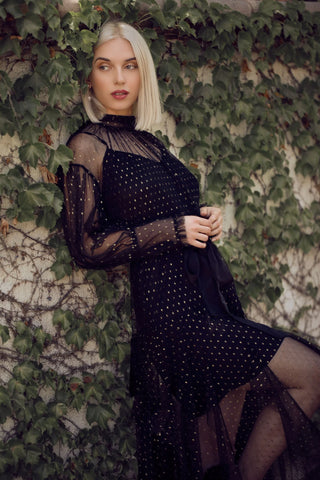
The little black dress was popularized in the 1920s by the queen of fashion herself: Coco Chanel. She wanted to design a long-lasting, versatile, affordable, and accessible dress that would last for years. And she did! The LBD’s chic simplicity has made the it a wardrobe essential for the past 100 years.

Trench coats may be a fashion staple these days, but they were originally designed for British Army officers in the First and Second World War. These waterproof, khaki garments were used “in the trenches,” hence the name.
After WWII, trench coats started entering the fashion scene. Because high-ranking officers had worn them, trench coats were seen as respectable and professional, making them perfect for businesswear.
When Humphrey Bogart wore a trench coat in Casablanca and Peter Sellers wore one in Pink Panther, the trench coat instantly became a popular outerwear choice. Burberry soon went on to make the trench coat even more accessible for men and women alike.
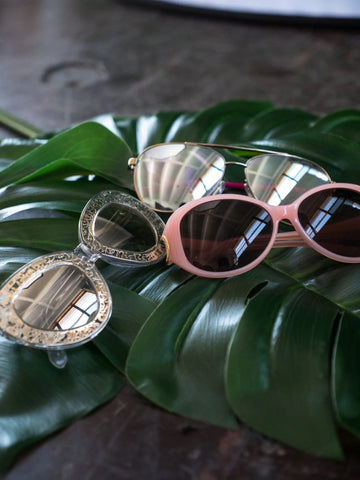
Sunglasses may date back to over 2,000 years ago when Inuit tribes used walrus bones, driftwood, or caribou bones over their eyes to protect them from the bright light of the sun reflecting from the snow.
Also in 12th-century China, smoked quartz lens panes similar to sunglasses were used by magistrate judges to prevent people reading their expressions.
However, modern sunglasses, as we know them, came to mass market in the 20th century. Foster Grant initially sold sunglasses at a stand on the Atlantic City Boardwalk in New Jersey to guard against the summer sun.
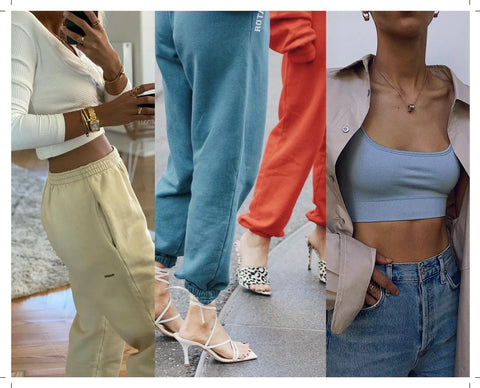
“Athleisure” isn’t as contemporary as you might think. The term was first used in 1979 in Nation’s Business to describe garments designed to appear athletic. In 2016, Merriam-Webster added the term to the dictionary: “casual clothing designed to be worn both for exercising and for general use.”
The goal of athleisure? To have a one-size-fits-all approach to your wardrobe, easily transitioning from running errands to hitting the gym to casual workwear.

The mini skirt was designed and popularized in the 1960s by Dame Mary Quant. She disliked the structured, tight garments of the 1950s, so she designed pleated miniskirts that were free and flowy.
She opened a London boutique named Bazaar, where she sold her designs in a unique, youthful way: with music, free drinks, and mannequins holding guitars. Her aesthetic quickly became popular with the younger generations and was seen on models like Twiggy and Jean Shrimpton. With her popularity, the love of the mini skirt took off!

The bikini got its name from a nuclear bomb! In 1946, French designers Jacques Heim and Louis Réard separately released similar designs of what we now know as the “bikini.” Heim named his design “atome” after the atom (the smallest particle of matter… like the smallest little bikini).
Réard named his “bikini” after Bikini Atoll, the name of a nuclear test site near Guam. The first public test of a nuclear bomb had taken place there just four days before the release of the “bikini” style. Réard wanted his bikini to have a similar explosive reaction when worn, and his version stuck.

Have you ever wondered why denim is called “denim”? The fabric was originally a twill cotton weave called “Serge de Nîmes,” because it originated in Nîmes, France. It’s believed this version replaced the wool and silk pants of the time with pure cotton, making them the predecessor of modern “jeans.”
Levi Strauss (from the brand Levi’s) and tailor Jacob Davis invented today’s blue jeans. In 1873, they combined copper rivet reinforcements with rigid denim to create “waist overalls,” which we now know as blue jeans.
Cool + quirky fashion history
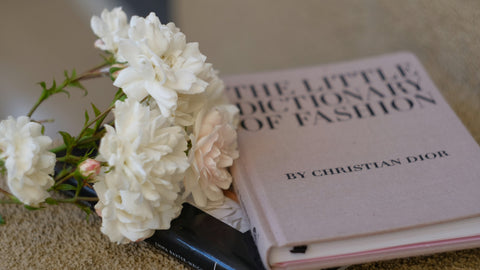
How did people learn about fashion trends back in the day? The same way we do today… through fashion magazines and social media (aka word of mouth). The first fashion magazine, Mercure Galant, began publication in France in 1672, commenting on the latest clothing styles and trends throughout Europe.
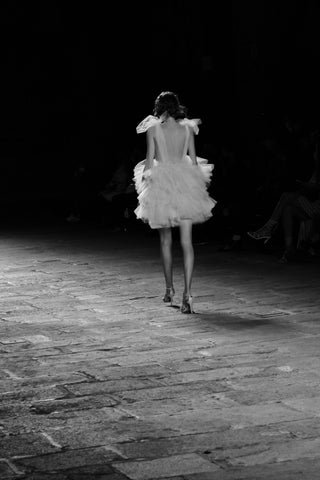
While many seamstresses and tailors existed throughout history, the first true “fashion designer” might have been Charles Frederick Worth. An Englishman living in Paris in the mid-1800s, he was the “first” of many fashion points: the first person to use live models in fashion shows, the first to sew branded labels in his clothes, and the first to come up with the “princess line” dress and the “walking dress.” He was the first individual to open an haute couture house in 1858. This has dubbed him the father of fashion design and paved the way for luxury designers and brands even today.

The “red carpet” dates back to ancient Greece. Greek playwright Aeschylus mentioned a red carpet in “Agamemnon” in 458 BCE. The “red carpet treatment” can be found in American Newspapers in the early 1800s, where red carpets were used for aristocrats who wanted to demonstrate their high status in society.
Throughout history, red has held different connotations from royalty to war – but red always attracts attention.

The first Met Gala took place in December 1948. Fashion publicist and CFDA founder Eleanor Lambert used the gala to raise funds for the Costume Institute and mark the opening of their annual exhibit.
The Costume Institute is the only department at the Met that must fund itself, so it uses the Gala to do so. Since 1995, the Met Gala has raised over $145 million for the department.
(Another fun fact about the Met Gala: no selfies allowed!)
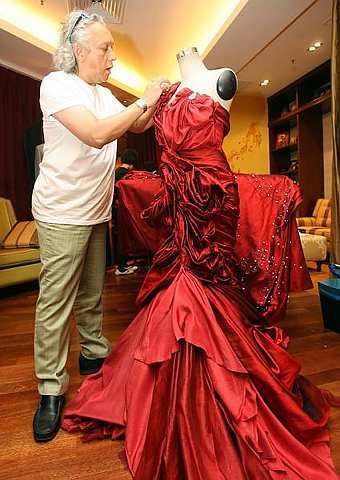
The most expensive dress in the world is valued at $30 million. Designed by Faisal Abdullah, the Nightingale of Kuala Lumpur is a stunning crimson dress made of silk, taffeta, and over 750 real diamonds.
Which of these fashion facts surprised you most? Share on your Instagram story and tag us @currentboutique to let us know!
Photo Sources
High heels, Trench coats, Athleisure, Mini skirt, Bikini, Fashion book, Fashion show, Red carpet, Met Gala, Nightingale of Kuala Lumpur








